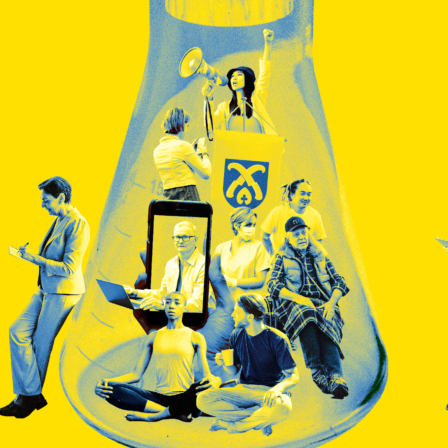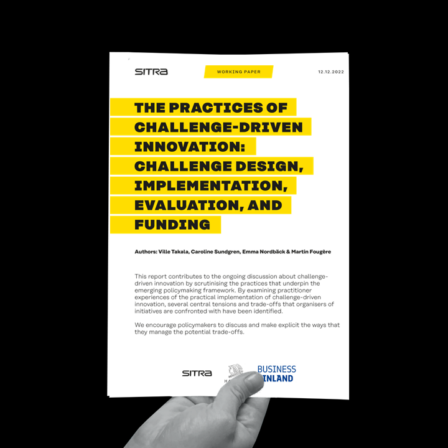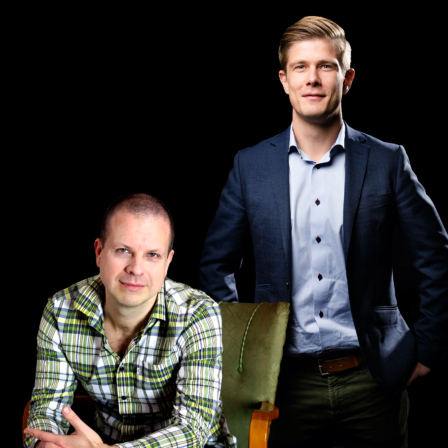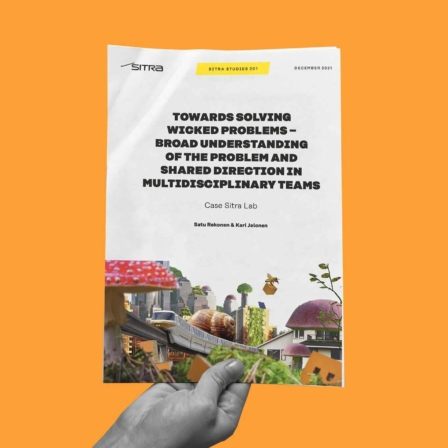This blog post is an introduction to the topic that Joseph D’Cruz will be speaking about on Thursday 21.11.2019 in Sitra Lab’s Heräämö XL: Societal Innovations and Global Challenges.
Working on sustainable development in UNDP, we’ve seen the scale and pace of challenges explode in recent years. As Dan Hill said; “the major challenges of the 21st century are wicked in nature, existential in threat, and upon us now.” The challenges we’re dealing with today include the climate emergency, reducing exclusion and the gap in equality and equity, heading off outbreaks of violent extremism, and responding to natural disasters, health emergencies and conflicts around the world. Underlying all of this is the urgent need to rebuild our belief in a shared future, and a collective commitment to our planet, our communities and our people.
The 2030 Agenda was developed to be that vision of a shared future, with the goals and targets of the SDGs as a roadmap to get there. But despite the best efforts of smart, committed people all around the world, we are struggling to reach those goals. With barely ten years to go, the aspiration of the world we want in 2030 seems to be slipping from our grasp.
So while we do our best to deliver today’s solutions, we are also challenging ourselves to dream, design and test new approaches. Approaches that allow us to find, test and scale solutions very rapidly, and to better target our resources at critical emerging development challenges. Our Accelerator Lab Network Initiative is one new approach. Can we build the world’s largest, fastest learning network to accelerate sustainable development? A year ago we set out to try, and we’re already learning a lot.
The Accelerator Lab Network can be visualized as three layers:
- 60 three-person teams, embedded within our existing country operations, that bring new expertise in exploration, solutions-mapping and experimentation to our front-line work;
- A network connecting these 60 nodes to significantly speed up the rate of knowledge sharing and learning amongst the Labs, and;
- A platform that connects this Lab network to the large ecosystem of partners and external expertise that have signed up to collaborate with us and support this radical new approach on the ground.
Each of these layers has challenges that we are trying to solve:
- Firstly, how can these Labs catalyze a new way of working on development on the ground? The Labs are introducing new capacities and ways of learning at the center of our teams. We aim to improve how we scan the horizon, surface locally-created solutions, test these rapidly in portfolios and scale them out with our partners on the ground. But how do we ensure that they mesh with our existing culture, systems, and ways of working? How do the Labs leverage our existing expertise and experience, while also helping our country teams develop better approaches to our work? The success of the Labs will be measured by how they help us pivot our entire approach on the ground, and not just by the insights and breakthroughs the Labs teams generate themselves.
- Secondly, how do we rapidly accelerate the sharing of knowledge and learning across the network? For the Labs to have impact at scale on big development challenges, these 60 nodes have to share solutions, hypotheses, ideas and intuitions, on what works, what doesn’t, and why. Accelerating the flow of knowledge amongst our teams is in some ways the biggest challenge because it is a people problem more than a tech problem. How do we make sharing knowledge seamless and safe? How do we create the systems, culture and common syntax to allow disparate types of knowledge, on diverse topics, to flow quickly where they’re needed? And how do we encourage our people to share uncertainty as much as solutions; to signal when they are unsure as much as broadcasting breakthroughs and successes? All of these are complex challenges that we don’t yet have answers for. But the network, properly designed, will take us from +60 to x60; multiplying the scale and speed of learning by combining effort and insight across teams and geographies.
- And finally, how do we create a platform that allows the work of this network to be visible to all our partners and collaborators around the world? Over the months since we began this experiment, there has been an outpouring of interest and support from around the world. Some of the smartest people in development have offered to help and want to know how they can collaborate. We need a platform that allows these collaborators to see what is happening within the Labs network, and to be able to connect, support, and collaborate where they can add value. Our teams on the ground also need to see the ecosystem of partners and resources out there, so that they can find the ideas and capacities they need to solve the challenges they encounter. This allows us to build the field, along with our own learning and knowledge. There is probably a tech solution out there for this, but we haven’t found it yet.
We will need to solve these challenges -and many more- to turn our dream into a functioning reality. We’re hired an amazing crew of mappers, experimenters and explorers to help chart the way. And we’re hoping for others to come join us. Follow our journey at Medium and @UNDPAccLabs on Twitter.
Sitra’s guest blogs give a voice to the players of the future in different fields. They do not (necessarily) directly link to Sitra’s work or agenda, but are the authors’ thoughts on current issues that relate to the themes Sitra is passioned about.
Want to learn more?
Join the Changemakers community on Facebook.
Order Sitra Lab’s monthly newsletter to get the latest updates on what’s happening.















Recommended
Have some more.